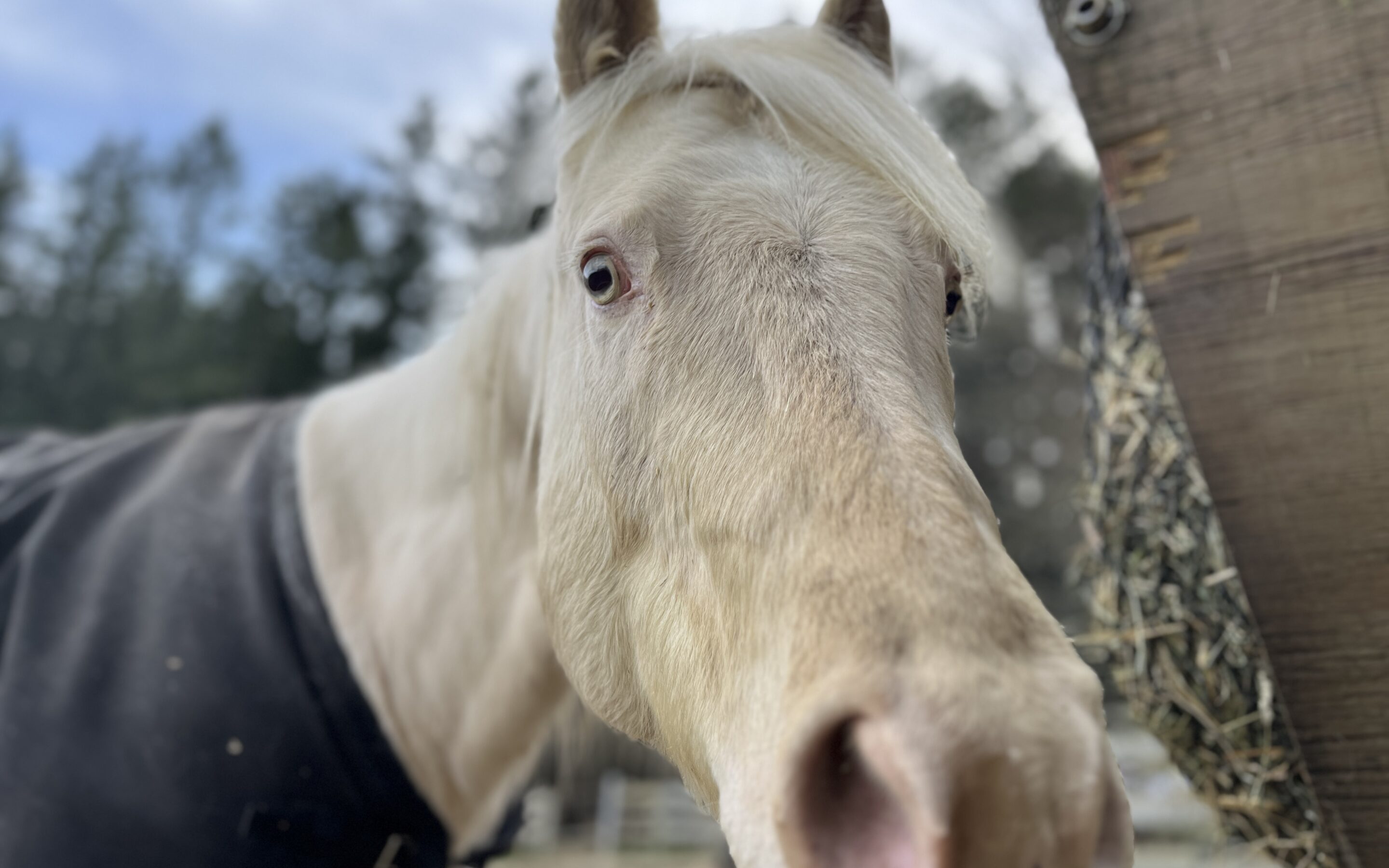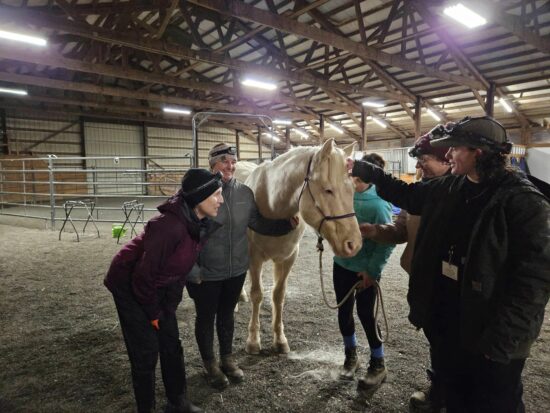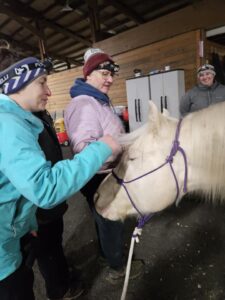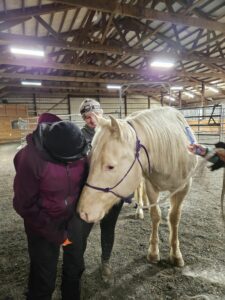It seems an inevitability of horses and horse ownership (or stewardship) that there will come a time when your horse suffers from the most base of afflictions: a stomachache. We can talk about how cruel it is that the design of horses is such that their digestive system is a one-way road, no u‑turns allowed. The hard truth is, the issue must pass, or it will arrest them where they stand.
The last thing you want to hear is of a horse down during feeding time. While the sight of a thousand pound animal curled up in their stall or on the soft ground of their paddock is certainly a sweet one during appropriate moments, when it occurs around mealtimes it is only ever anxiety inducing, unintentionally weaponizing the same vulnerability we ooh and aww at during healthier times. Alarm bells ring as our vet’s phone line does the same, and why, tell me, do horses always choose the most inopportune moments to colic?
It was Jupiter who spiked our blood pressure most recently, lying down with hay still bulging in his net. His vitals were within normal range, indicating his pain level wasn’t extreme, but he was clearly uncomfortable. A call to our vets and a dose of banamine later, Jupiter was feeling much improved, scrounging around for hay scraps we might have missed when pulling his hay. It was headed into evening, so we set up our cameras to watch him throughout the night, a baby monitor for our 6‑year-old colicky babe.
He pooped — a great sign, and what our vets were waiting for before easing him back into food. We started with a small soupy mash, gentle on the stomach with the added benefit of additional water intake. But shortly after finishing this snack, he was down again. Not painfully so, no thrashing or rolling, but clearly not feeling so hot.
It is truly a blessing to have Bonnie living on site, for when we noticed this change in Jupiter remotely, she was just a phone call and a quick walk away from being able to check on him. She got him up and got him moving, spending a little time to monitor his symptoms for any negative changes. A sweet water later, and she tucked him back into his stall, where he spent the remainder of the evening quiet.
Our vets, in puzzling out what could be the cause of his upset, requested that we check for sand. The next morning, armed with a plastic baggie, we scooped up some of Jupiter’s manure, of which he had had more overnight. It was soft in consistency, another sign that things were definitely not all right under the hood. Running a sand test is quite simple: breaking up the manure and adding water to create a slurry, allowing the bag (some people use gloves) to hang at an angle so the sand can collect in one place. Density and all that. Sure enough, Jupiter’s test was positive — he ended up with around 1/4″ of sand at the corner of his bagged sample after a brief waiting period.
We have always run sand tests here at SAFE, typically alongside our quarterly (for some) and bi-annual (for everyone) fecals. But after Otto’s sand colic last year, we decided that we needed to buck up our sand treatment in order to prevent situations like his from occurring. Luckily, Otto was able to pass it (and went on to get adopted not too long after!) but law of statistics says that not every horse would be so lucky. Treating more regularly for sand would hopefully help to cut down on colics.
But even with the quarterly treatments, we were still seeing positive results. And in this case, positive is a negative. So at the beginning of 2024, we opted to treat our entire herd monthly for sand, a 7‑day course of psyllium pellets added to their daily supplements at the beginning of each month.
Jupiter was on day 2 of his treatment when he colicked. It didn’t quite seem fair, to try to get ahead of the problem and have it happen anyway. But getting ahead of the problem was, in part, what caused it in the first place. But stay with me, this is a good thing. Our vets told us that gastric upset can occur as sand starts moving through the system. Starting Jupiter on his monthly sand-rid could have triggered his minor colic. But while we hate seeing a horse in distress, a minor discomfort is much preferable to a major impaction down the line. In helping him to move the little bit of sand he had, we were able to prevent it from building into something much more severe.
Because he was continuing to pass manure, we kept refeeding him. Typically we refeed with mash, but in the case of sand, our vet recommended hay instead. Forage is perhaps the best way to move sand along, tag-teaming with the psyllium. For several days and nights, we continued to monitor him. There were a few more doses of banamine given when his discomfort returned (never more than that initial display of a quiet mid-meal or post-meal lie down), but he continued to show interest in eating and passed manure on a consistent basis. He got a double dose of psyllium, at least a sweet water a day, and many pets and kisses to speed along the healing process. Our Saturday PM chore team was especially instrumental in that last part — after being pulled from his stall for a little walk after he was showing some signs of upset, the team gathered round him for some pampering and well-wishes. Sure, banamine is great, but nothing beats the power of good old fashioned love!
We treated Jupiter for sand for a little over a week, still getting slight positive results each time we checked. But his most recent test came back negative, leaving him in the clear for the time being! Dealing with a colic is never fun, but there is always relief when you know there to be a light at the end of the tunnel. Jupiter has made a full recovery, and while we hope not to see him in the ‘clinic’ again anytime soon, was the absolute perfect patient!





